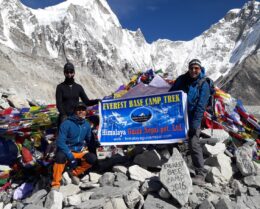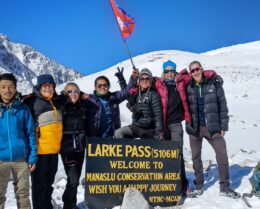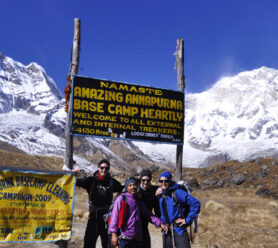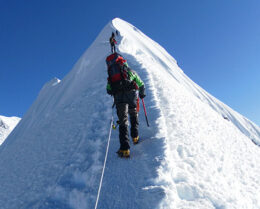How hard is it to climb Mount Everest?
UPDATED ON 19 December, 2023
It is dangerous to ascend Mount Everest. Knowing about a region on the north side known as “Rainbow Ridge,” which got its name from all the dead bodies covered in brightly colored climbing gear, can help you understand the enormity of this desolation. Here in this article, we will discuss How hard is it to climb Mount Everest.
However, an ambitious endeavor like climbing Everest undoubtedly comes with many difficulties. Climbers even utilize some dead remains as landmarks.
There are significant challenges brought on by the height, the climate, and problems like avalanches. However, recently, the difficulty has unpredictably increased due to the heavy traffic on this trail. Since there are so many climbers on Everest, the fatality rate has decreased, yet the number of climbers who have died still exceeds a minimum threshold.
Similar to the base camp, which is packed, an avalanche might be the difference between life and death. This is how hard is it to climb Mount Everest.
In a comparable incident, 13 Sherpa guides perished in 2014. As more people opt for easier trails, the number of Sherpa guides has decreased as of late. This does add to the difficulties, as it takes at least one helping hand to ascend a mountain as steep as Everest. Sherpas are also like your walking companion.
Everest can be climbed, despite how difficult it is. In actuality, it isn’t even the hardest climb; it ranks sixth on the list of the toughest climbs in the world.
Everest has grown less challenging as a result of its commercialization. Today’s services enable climbers to hire local sherpas to carry their luggage, cooks to make food, and even have a personal physician at Base Camp in the event of injury when in the past it was a feat few people could brag about.
Mount Everest Expedition
In Nepal, Mount Everest is referred to as Sagarmatha, and the Sherpa and Tibetan people refer to it as Chomolungma. Since the first Everest expedition team reached 7000 meters from the Tibet side in 1921, it has been climbed. Leigh Mallory and Andrew Irvine died 500 meters below the Tibet side peak during the 1924 Everest expedition. Whether they succeeded in reaching the peak or not is still up for debate today.
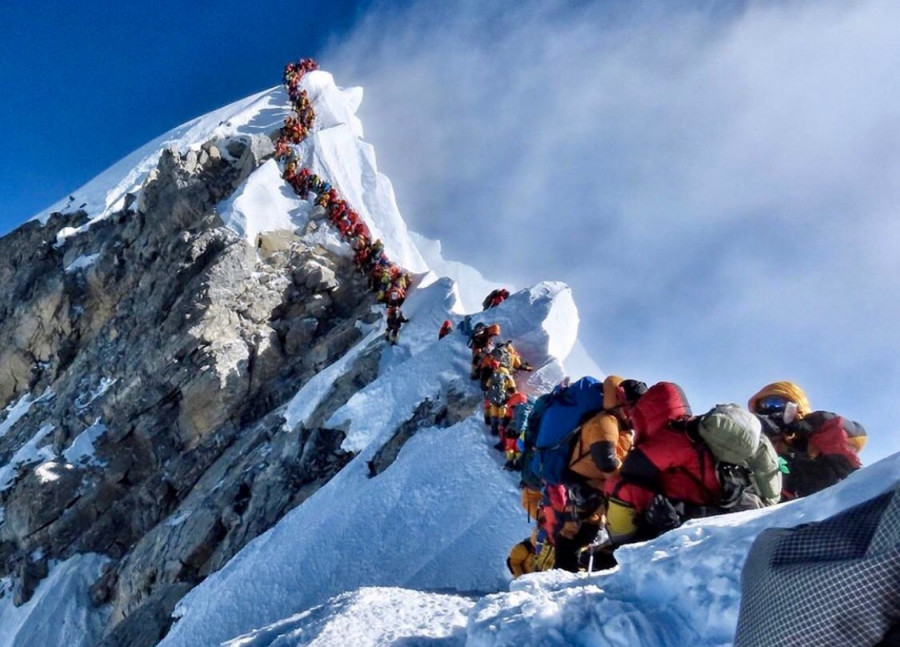
It is still one of the greatest puzzles in climbing history, though. Between 1921 and 1952, numerous attempts were made without result. But on May 29, 1953, Sir Edmund Hillary and Tenzing Norgay Sherpa successfully ascended Everest from the southeast Nepali side. Since then, Mount Everest has become popular with climbers.
Some other Peak Climbing in the Everest Region
How Difficult is the Everest Climbing Route?
There are two sides from where one can reach the peak’s summit. One is from Nepal and the other one is from Tibet. Annually, a lot of people climb Mount Everest from the south side because it is easy in comparison to the north side. This is how hard is it to climb Mount Everest from the north side.
Mount Everest Summit from the south side
The Nepalese side of Mount Everest is another name for it. Because it is more difficult and adventurous than the northern side, climbers favor the southern side. This expedition journey includes acclimatization, camping, and a summit ascent from the south side.
We will transfer from Camp 1 (6,000m) to Camp 2 after this camp (6,400m). Camp 1 has crevasses, so you should always have ladders available for security. Camp 2 offers breathtaking views of Lhotse and other snow-capped peaks and is situated at the base of the west ridge. The majority of kitchens and dining areas are located within a lateral moraine. It is frequently used to acclimatize and serves as the starting point for camp three.
Mount Everest would have been more challenging without these camps. This can be inferred by considering the route’s great difficulty regardless of the presence of these camps. This is how hard is it to climb Mount Everest.
Climbing after Camp 4 of Mount Everest
The summit, which stands about 500 meters high, is reached through South Col’s Camp 4. Many weather-related issues could derail the trip with Gayle force winds. The South-East Ridge of the summit ascent path is particularly treacherous.
It takes roughly 4 hours to travel from South Col to the Balcony. You would need to travel for at least 18 hours after arriving here to reach the peak. Additional oxygen supplemental supplies and other preparations are necessary if you intend to stay at the South Col.
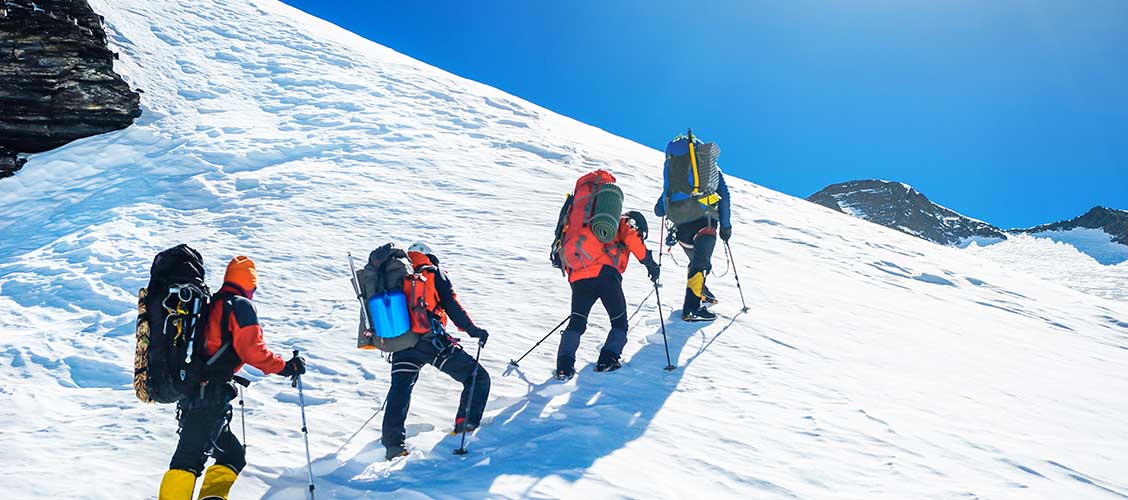
Maintaining a high altitude can be challenging, if not impossible, without additional oxygen. Our body won’t function effectively in cold temperatures at high altitudes with little oxygen and poor air pressure. Thus, after admiring the stunning Himalayan territory from the summit, you will descend through the Hilary Step.
In the end, in addition to the route’s inherent complexity, your capacity for acclimatization will determine the route’s overall difficulty for you. This is how hard is it to climb Mount Everest. After discussing the challenges, let’s look at what makes climbing Everest challenging.
What Makes Climbing Mount Everest Difficult – Is it dangerous to climb Mount Everest?
High Altitude
The elevation of Mount Everest is 8848 meters above sea level. The airport at Lukla is situated at a higher altitude than the one in Kathmandu. The amount of oxygen available decreases and the height rises by 600–800 meters per day as you hike higher. If not treated right once, acute mountain sickness, which is brought on by increasing altitude, can be fatal. It will be helpful to stop halfway through your travel to allow for acclimatization.
Altitude sickness
Altitude sickness is one of the most important factors to take into account when climbing Mount Everest. It is brought on by a shortage of oxygen and low air pressure, both of which are harmful to your health. The amount of oxygen in the air diminishes as you climb the path.
Many climbers will need to bring extra oxygen on this climb because the Death Zone over 8,000m has extremely little oxygen. This is how hard is it to climb Mount Everest this can add to your Climbing Mount Everest Difficult.
Long Duration
Expeditions to Mount Everest typically last 60 days or two months of planning and preparation. A few of the difficulties include extremely cold weather, below-freezing temps, and difficult climbing terrain. You’ll need plenty of time to adjust before you can climb to the summit and return.
The season for Everest expeditions begins in late March. They begin when you take a flight to Lukla and arrive at Everest base camp. We pass through Phakding, Namche, Tengboche, Dingboche, and Gorakshep on our way to EBC. At the Southern Everest Base Camp, the journey begins (5,300 meters).
By climbing, adjusting to the altitude, and then decreasing, you will be ready for the peak ascent. The “Death Zone,” or a height of over 7925 meters, is reached by taking the riskiest path to the peak. The Mount Everest trek takes around two months to complete due to the high risk involved.
Before the expedition, a typical guided trip would cover about 15 kilometers every day. You’ll be moving over rocky, challenging terrain that occasionally gets snowy. Most of your ascent in this area will be upward as you gain height. Porters or mules carry your belongings as you go. You should therefore prepare for the ascent to Everest Base Camp.
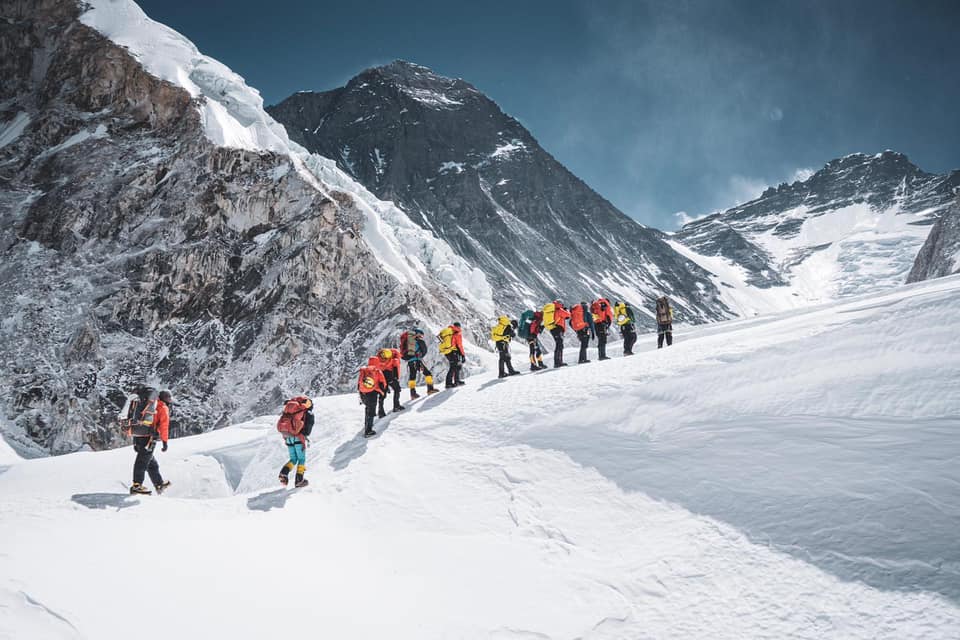
Climbers must face challenges including the glacier’s shifting labyrinth of ice. Climbers will adapt to the campgrounds at various points along their trip. Before ascending halfway above the Khumbu glacier, they spend 4 to 5 days acclimating to the base camp. After several days of acclimatization, they ascend to Camp 1.
Before heading back to base camp, they will spend two nights adjusting at Camp 1. To help them become used to the high-altitude conditions present in the Everest region, this is done. Before starting their ascent to Camp 2, which is located at the base of Mount Lhotse, they return to Camp 1 and spend the night there.
Temperature
Every 100 meters of elevation gain results in a 0.65-degree Celsius drop in air temperature. That suggests that they should anticipate a 57-degree change in temperature from sea level to 8,800 meters.
It’s chilly up there, despite it being a stupid simplification that ignores a variety of other problems. It doesn’t help that they’ll go from sleeping comfortably in the darkness of the night to fighting uphill as the sun shines down from above and reflects off the snow. Climbers will have to deal with temperatures below zero at night and heat that is reflected up from the mountains’ snow during the day.
The weather at Everest Base Camp is erratic and difficult to forecast. Traveling to EBC throughout the day may expose you to a wide range of temperatures. In the Everest region, however, the nights are substantially cooler than the days. The temperature at the base camp is about -12°C. The Base Camp, on the other hand, has a maximum temperature of 15°C with a wind speed of 5 to 6 mph.
Weather
The Himalayan climate has the power to determine one’s fate. Their window of opportunity for summiting will be determined by a reliable weather forecast, but many climbers have been caught off guard by storms and have waited a little too long on summit day. They might not be able to influence the weather gods, but they can get reliable forecasts, have faith in their instincts, and be aware of early warning signs.
Acclimatization
Acclimatization is necessary before this adventure and trek excursion in the Everest region. Walking slowly and without haste can prevent altitude sickness. Drinking enough water while hiking will help you stay hydrated. For novice trekkers who have never gone on a journey at a high altitude, this is a helpful method of preparation. Altitude sickness can be treated with the use of these various acclimatization techniques.
Avalanches
Another characteristic of Everest is avalanches. They are more prevalent in some places than others. On the Mount Everest routes, they are the North Col and South Col. There is also Khumbu Ice Falls, also called “Suicide Passage.” They must be traversed to get to the peak.
Although you can’t stop them, you can limit the amount of time they spend in particular areas. Try to cross in the morning before the sun has warmed the snow. It can be hazardous when ice and rocks fall from the sky, particularly if they travel southeast from Nepal. There are numerous avalanche-prone spots in the Falls and the South Col beneath the Lhotse Face, both of which are close to the Khumbu Ice.
Falls
One of the Mount Everest trek’s riskiest parts is the falls. It’s also one of the main reasons people die on Everest. It could be dangerous to ascend high peaks and stay in higher camps.
Stepping outside of their tent into the freezing, dark ground is one of the risks. Maintaining footwork, double-checking knots, and utilizing carabiners are all required when climbing Mount Everest. In addition, previous snow and ice experience are crucial.
Crevasses
Crevasses, which form in glacial ice, have the potential to swallow climbers if they are not careful. On the Nepalese side, you can find the legendary Khumbu Ice Falls and the Western Cwm. Expedition teams link ropes so that if someone falls, they can be pulled to safely cross these crevasses.
Lack of Training
Training for Mt. Everest must begin at least six months before the trek. The Everest Base Camp tour that comes before this expedition increases the difficulty of the journey. You might improve your climbing by working out in a gym and hiring a personal trainer. Everest climbing is a huge endeavor that requires careful planning.
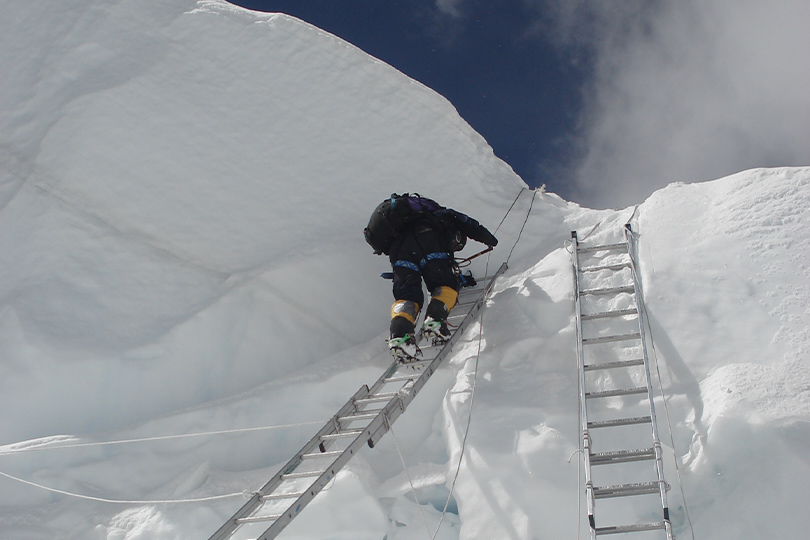
You should start your training as soon as you can. Exercise that enhances your strength, stamina, and fitness is essential. You will benefit tremendously from jogging, hiking, cycling, swimming, and other activities.
You could also be able to reach your fitness objectives by using light weights. Your lung capacity will improve while your stamina grows when you hike up and downhill.
Summit Fever
When you are climbing a mountain and battling, the temptation to keep going is quite real. But putting so much effort into perilous Mount Everest slopes and high altitude environments can result in more risks and difficulties.
A “turnaround time” can be specified by the mountain climbers so they would know when to stop and descend again. No matter how near you are to the summit, you should be reasonable when establishing your time and turnaround. It greatly aids you on the ascent to keep in mind your reasons for being on the mountain.
They won’t get carried away if you keep these things in perspective, and you could find your path to be less difficult. Avoid taking unnecessary risks with your life because they can be deadly at the high altitude of the Everest summit, especially if you are not a skilled professional.

